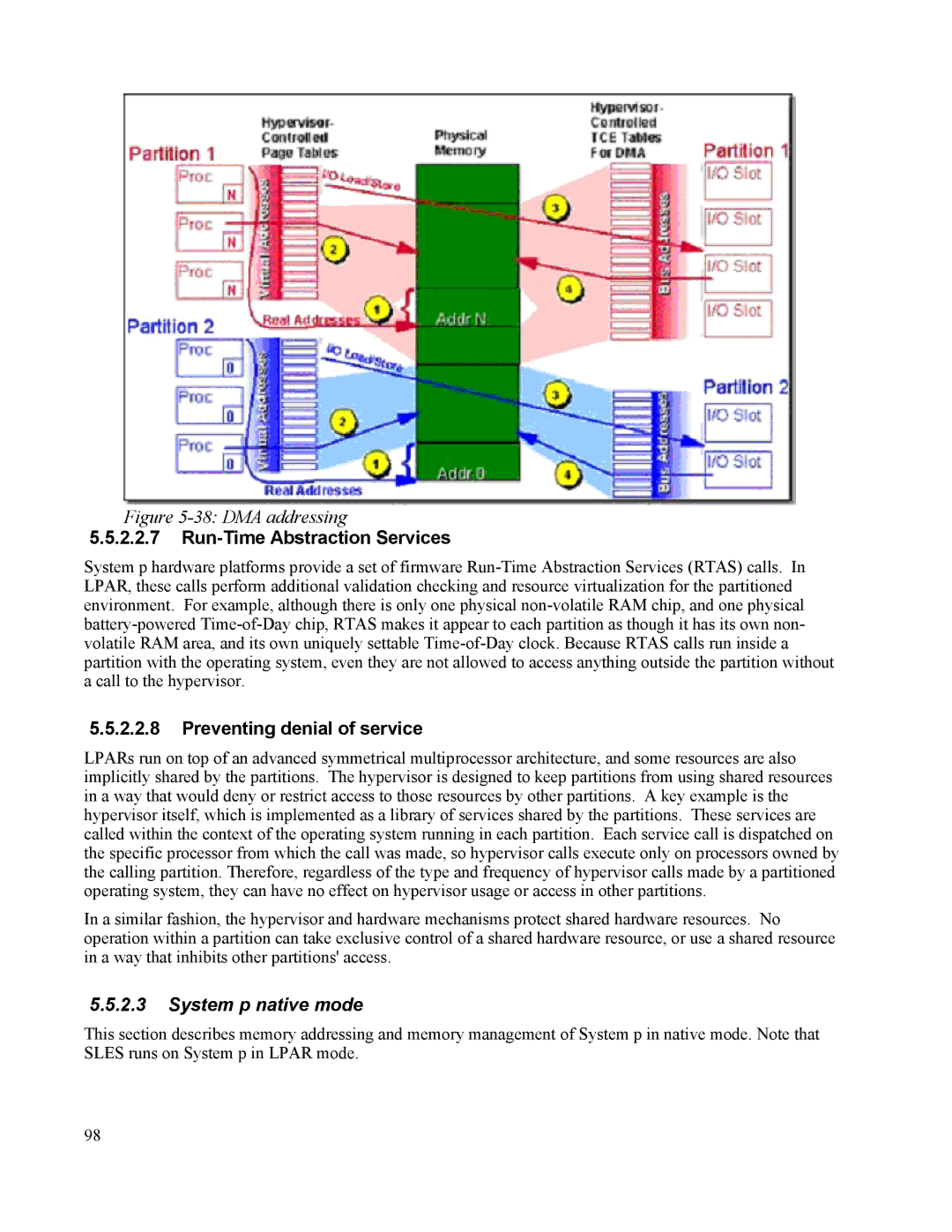
Figure 5-38: DMA addressing
5.5.2.2.7Run-Time Abstraction Services
System p hardware platforms provide a set of firmware
5.5.2.2.8Preventing denial of service
LPARs run on top of an advanced symmetrical multiprocessor architecture, and some resources are also implicitly shared by the partitions. The hypervisor is designed to keep partitions from using shared resources in a way that would deny or restrict access to those resources by other partitions. A key example is the hypervisor itself, which is implemented as a library of services shared by the partitions. These services are called within the context of the operating system running in each partition. Each service call is dispatched on the specific processor from which the call was made, so hypervisor calls execute only on processors owned by the calling partition. Therefore, regardless of the type and frequency of hypervisor calls made by a partitioned operating system, they can have no effect on hypervisor usage or access in other partitions.
In a similar fashion, the hypervisor and hardware mechanisms protect shared hardware resources. No operation within a partition can take exclusive control of a shared hardware resource, or use a shared resource in a way that inhibits other partitions' access.
5.5.2.3System p native mode
This section describes memory addressing and memory management of System p in native mode. Note that SLES runs on System p in LPAR mode.
98
